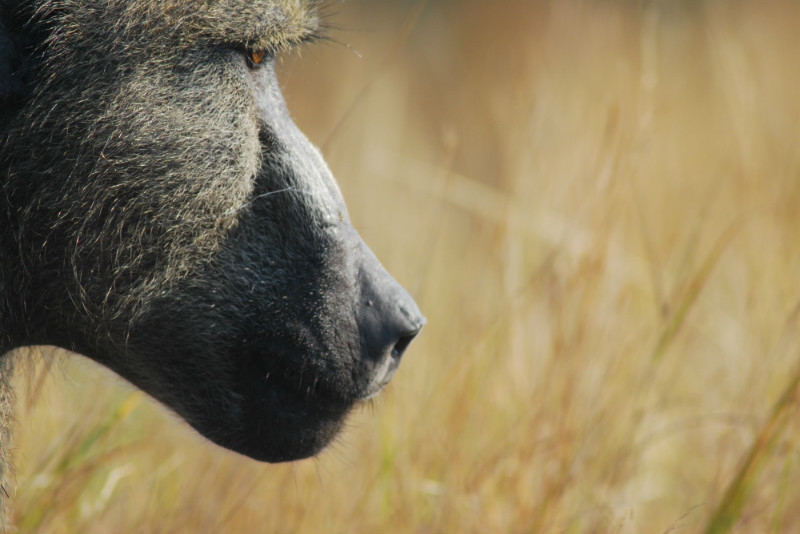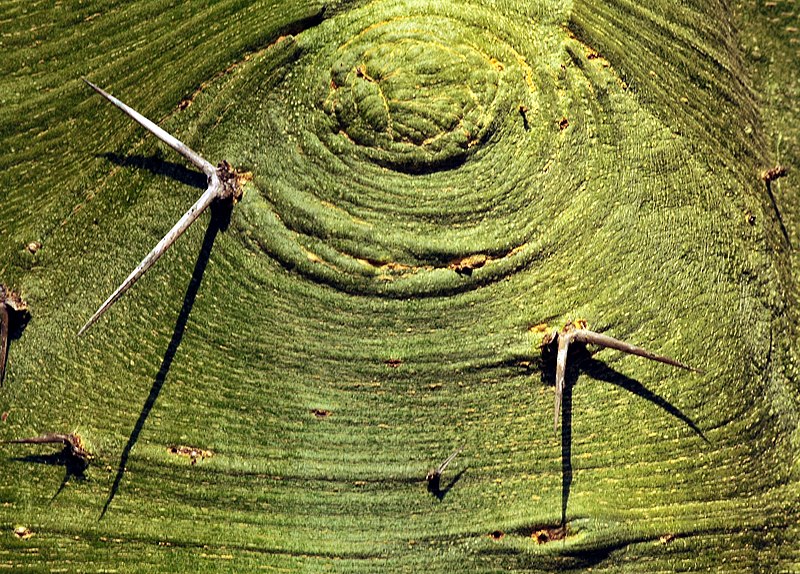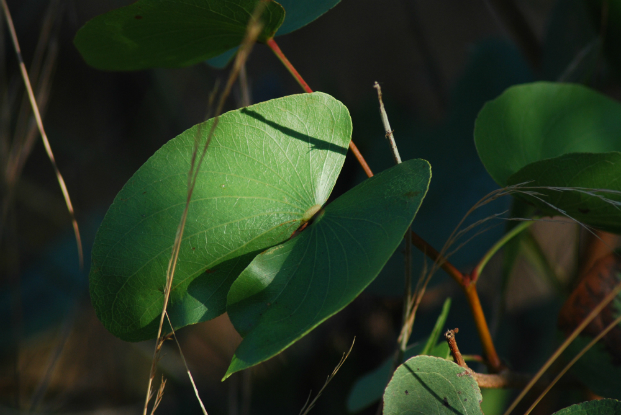
A medium to large sized tree with a sparsely rounded to spreading crown. The fever tree has a very distinctive yellow trunk which is covered with a fine dust. It occurs on river banks, flood plains and swampy area.
7 amazing facts about the fever tree
1. Origin of the name
The fever tree gets its common name from pioneers who believed that the tree caused fevers. In fact the fever was actually malaria which they caught from mosquitoes that bred in the swampy fever tree habitat.
The African Plant Hunter, Gus goes to the banks of the Runde river, in Gonarezhou National Park, slightly north of the Limpopo, to look closely at the fever trees there.
2. Medicinal properties
Traditional medicines use the bark of the fever tree for treating fevers and eye infections, and the roots are powdered up for the treatment of malaria.
Gus, the African Plant Hunter, looks at the pharmaceutical uses of three compounds found in the bark extracts of this well-known African tree: catechins, catechols and catecholamines.
3. Self defence
The fever tree has pairs of long straight white thorns which slow the rate of browsing down. These thorns are prominent in young shrubby trees which are at more risk from browsers compared to the tall mature trees where they are barely noticeable.
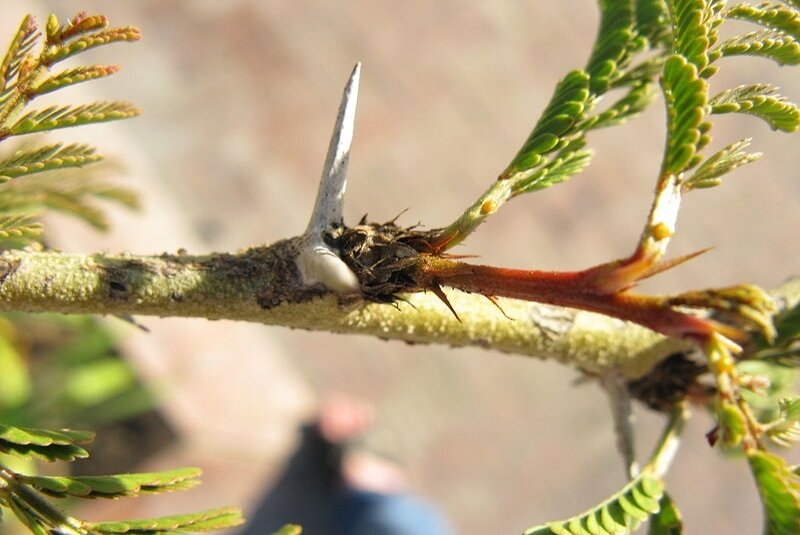
Spines and emerging spring leaves of the fever tree (Acacia xanthophloea). The spines of African Acacias such as this are modified stipules. Note the emerging stipules beginning to form spines, and the older, hardened spines at the bases of shoots. Photo: Jean Geilland, Wikimedia Commons
4. Bountiful food
The fever tree offers sustenance to a range of animals – baboons, monkeys and bush babies for the nutritious gum. Giraffes and monkeys eat the pods, elephants the young branches and leaves, and monkeys, butterflies, bees and the grey go-away bird are attracted to the flowers.
5. Wild animal fencing
Fever tree trunks and main branches are used as fencing to keep hippos out of cultivated areas.
6. Prickly customer
The genus of the fever tree, acacia, stems from the Greek word, “acantha” meaning spine, thorn or prickle.
7. Yellow bark
The species name for the fever tree has Greek origins, xanthophloea, refers to the tree’s bark, “xanthos” meaning yellow and “phloios” meaning bark.
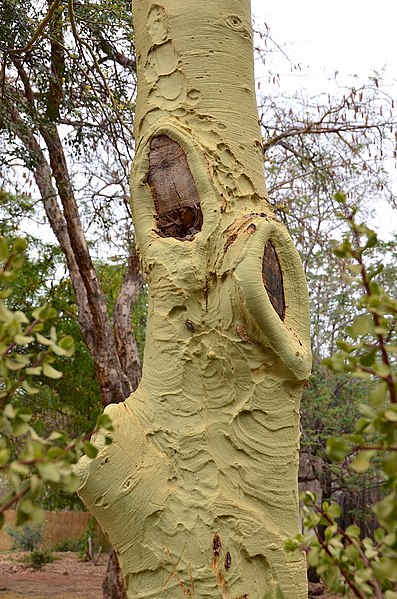
Trunk of the fever tree (Acacia xanthophloea) is covered in a fine yellow powder. Olga Ernst / CC BY-SA
The fever tree fact-file
Related posts
There are plenty more trees to explore on Fascinating Africa, but if you only have time to check one out visit the mopane page to discover 8 fun facts, my favourite is:
To conserve water on hot or windy days the 2 sides of the mopane leaf will limit evaporation by folding together and thus reducing the surface area that is exposed.

Find out more about the incredible trees of Africa: Trees of Kruger National Park
Vote for the fact you find most fascinating
Fever tree trunks and main branches are used as fencing to keep hippos out of cultivated areas.
The fever tree offers sustenance to a range of animals – baboons, monkeys and bush babies for the nutritious gum. Giraffes and monkeys eat the pods, elephants the young branches and leaves, and monkeys, butterflies, bees and the grey go-away bird are attracted to the flowers.
The genus of the fever tree, acacia, stems from the Greek word, “acantha” meaning spine, thorn or prickle.
The fever tree has pairs of long straight white thorns which slow the rate of browsing down. These thorns are prominent in young shrubby trees which are at more risk from browsers compared to the tall mature trees where they are barely noticeable.
The species name for the fever tree has Greek origins, xanthophloea, refers to the tree’s bark, “xanthos” meaning yellow and “phloios” meaning bark.
The fever tree gets its common name from pioneers who believed that the tree caused fevers. In fact the fever was actually malaria which they caught from mosquitoes that bred in the swampy fever tree habitat.
Traditional medicines use the bark of the fever tree for treating fevers and eye infections, and the roots are powdered up for the treatment of malaria.

